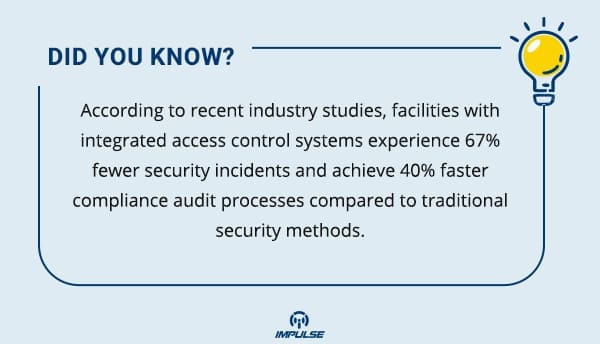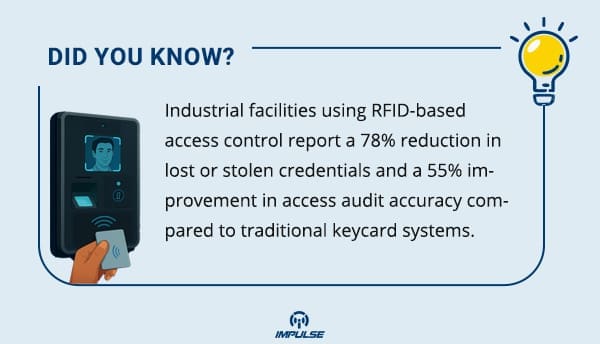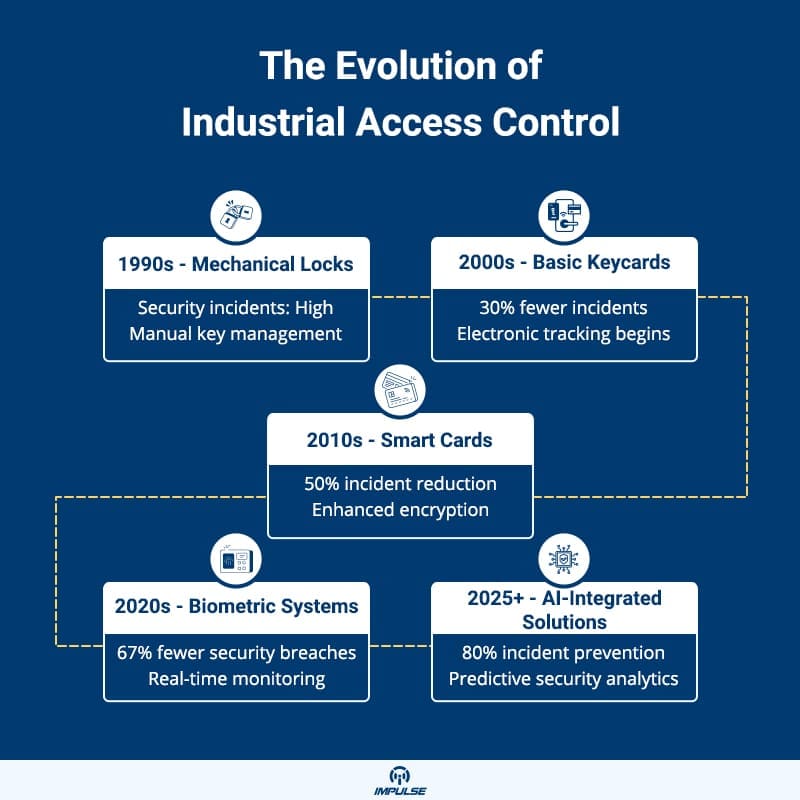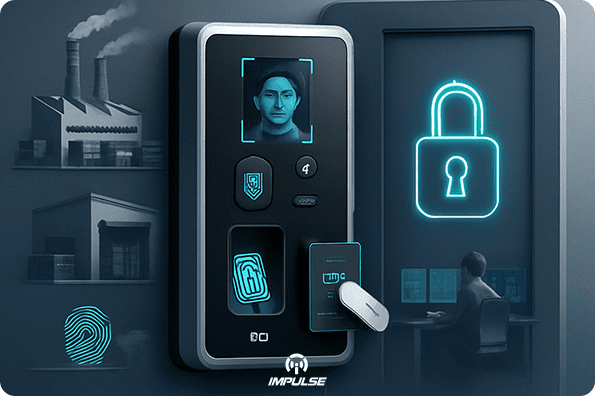In today’s rapidly evolving industrial landscape, the intersection of safety, security, and compliance has never been more critical. As manufacturing facilities expand and regulatory requirements become increasingly stringent, organizations are turning to advanced access control solutions to create secure, compliant, and efficient work environments. The traditional lock-and-key approach is no longer sufficient for modern industrial operations that demand sophisticated security compliance systems capable of protecting assets, personnel, and sensitive information.

The Growing Need for Industrial Security Solutions
The modern industrial environment faces unprecedented security challenges. From protecting intellectual property and sensitive manufacturing processes to ensuring compliance with OSHA, ISO, and other regulatory standards, organizations must implement comprehensive industrial safety solutions that go beyond basic perimeter security.
Manufacturing facilities are particularly vulnerable to various security threats, including unauthorized access to restricted areas, industrial espionage, workplace accidents due to inadequate access controls, and compliance violations that can result in significant penalties. The complexity of modern industrial operations, with multiple shifts, contractor access, and sensitive equipment zones, demands smart access management systems that can adapt to dynamic operational requirements while maintaining the highest security standards.
Advanced access control technology has evolved to address these challenges by providing real-time monitoring, automated compliance reporting, and intelligent access management that integrates seamlessly with existing safety protocols. These systems not only enhance security but also contribute to operational efficiency by streamlining personnel movement and reducing administrative overhead.
How Advanced Access Control Transforms Industrial Operations
Multi-Layered Security Architecture
Modern industrial access management systems employ sophisticated multi-layered security architectures that provide comprehensive protection across different operational zones. These systems utilize various authentication methods, including RFID cards, biometric scanners, and PIN codes, to ensure that only authorized personnel can access specific areas.
The Four Doors Access Control System exemplifies this approach by offering advanced features such as multi-computer management and regional interlocking capabilities. This system enables organizations to create complex access hierarchies where different personnel levels have varying access permissions, ensuring that sensitive manufacturing areas remain secure while maintaining operational efficiency.
Smart Card Technology Integration
Workplace security is significantly enhanced through the implementation of smart card technologies that provide secure, contactless data transmission. The MIFARE Card (IMP-ACS-MFCRD) offers encrypted initialization and long-term data retention capabilities, supporting multi-application functionality with robust anti-replay protection. This technology ensures that access credentials cannot be easily duplicated or compromised, maintaining the integrity of the security compliance systems.
RFID-Based Access Solutions
Manufacturing facility security benefits greatly from RFID technology implementation. The RFID Card Reader utilizes advanced RF technology with efficient decoding algorithms, supporting both EM4100 and MIFARE cards. This versatility allows organizations to choose the most appropriate card technology for their specific operational requirements while maintaining high sensitivity and low power consumption.

Benefits of Implementing Advanced Access Control Systems
Enhanced Safety Compliance
Safety compliance solutions are integral to modern industrial operations, and advanced access control plays a crucial role in maintaining regulatory compliance. These systems automatically generate detailed audit trails, tracking who accessed which areas and when, providing comprehensive documentation for regulatory inspections and internal safety reviews.
Restricted area control capabilities ensure that only properly trained and authorized personnel can access hazardous zones, significantly reducing the risk of accidents and compliance violations. Integration with fire safety systems and emergency protocols ensures that access controls enhance rather than hinder emergency response procedures.

Operational Efficiency and Cost Reduction
Digital access control in manufacturing environments delivers substantial operational benefits beyond security enhancement. Automated access management reduces administrative workload, eliminates the costs associated with physical key management, and provides real-time visibility into facility utilization patterns.
Organizations implementing comprehensive secure access solutions for factories typically experience reduced security staffing requirements, lower insurance premiums due to enhanced security measures, and improved operational efficiency through streamlined access processes.
Integration with Safety Standards
Integrating access control with safety standards creates a comprehensive security ecosystem that addresses both physical security and regulatory compliance requirements. Modern systems can interface with environmental monitoring equipment, machinery safety systems, and emergency response protocols to create an interconnected safety network.
Safety and compliance access systems provide automated reporting capabilities that simplify regulatory compliance processes. These systems can generate customized reports for different regulatory frameworks, ensuring that organizations maintain compliance with industry-specific requirements while minimizing administrative burden.
Future-Ready Technology
Advanced access control for industrial sites incorporates cutting-edge technologies such as artificial intelligence, machine learning, and IoT integration. These capabilities enable predictive analytics for security threat detection, automated system optimization based on usage patterns, and seamless integration with other industrial automation systems.
Cloud platform integration capabilities, such as those offered by the Four Doors Access Control System, enable remote monitoring and management, allowing security administrators to oversee multiple facilities from centralized locations while maintaining real-time visibility into access events and system performance.
Implementing Your Advanced Access Control Strategy
Assessment and Planning
The first step in implementing industrial safety solutions is conducting a comprehensive security assessment that evaluates current vulnerabilities, regulatory requirements, and operational needs. This assessment should consider factors such as facility layout, personnel access patterns, regulatory compliance requirements, and integration with existing safety systems.
Organizations should work with experienced security professionals to develop a phased implementation plan that minimizes operational disruption while maximizing security enhancement. This plan should include provisions for staff training, system testing, and ongoing maintenance requirements.
Technology Selection and Deployment
Selecting appropriate access control systems requires careful consideration of factors such as scalability, integration capabilities, and long-term maintenance requirements. Organizations should prioritize solutions that offer flexibility for future expansion and integration with emerging technologies.
Professional installation and configuration ensure optimal system performance and reliability. Proper system setup includes configuring access hierarchies, establishing emergency protocols, and implementing backup procedures to maintain security during system maintenance or unexpected outages.
Training and Ongoing Management
Successful implementation of smart access management systems requires comprehensive staff training and ongoing system management. Personnel must understand proper system usage, emergency procedures, and their roles in maintaining security protocols.
Regular system audits and performance reviews ensure continued effectiveness and compliance with evolving regulatory requirements. Organizations should establish protocols for credential management, access level reviews, and system updates to maintain optimal security posture.
Conclusion
The future of industrial security lies in sophisticated advanced access control systems that seamlessly integrate safety, security, and compliance requirements. As manufacturing environments become increasingly complex and regulatory standards continue to evolve, organizations that invest in comprehensive industrial access management solutions position themselves for long-term success.
Modern access control technology offers unprecedented capabilities for protecting personnel, assets, and intellectual property while streamlining operations and ensuring regulatory compliance. From smart card technologies and RFID systems to AI-powered analytics and cloud-based management platforms, today’s solutions provide the flexibility and scalability needed to address current and future security challenges.
The investment in workplace security through advanced access control systems pays dividends through reduced security incidents, improved compliance posture, and enhanced operational efficiency. As industrial operations continue to evolve, organizations that embrace these technologies will maintain competitive advantages while ensuring the safety and security of their most valuable assets.
Take the first step towards implementing cutting-edge access control systems tailored to your industrial requirements. Discover effective solutions that enhance security while meeting your operational needs.


